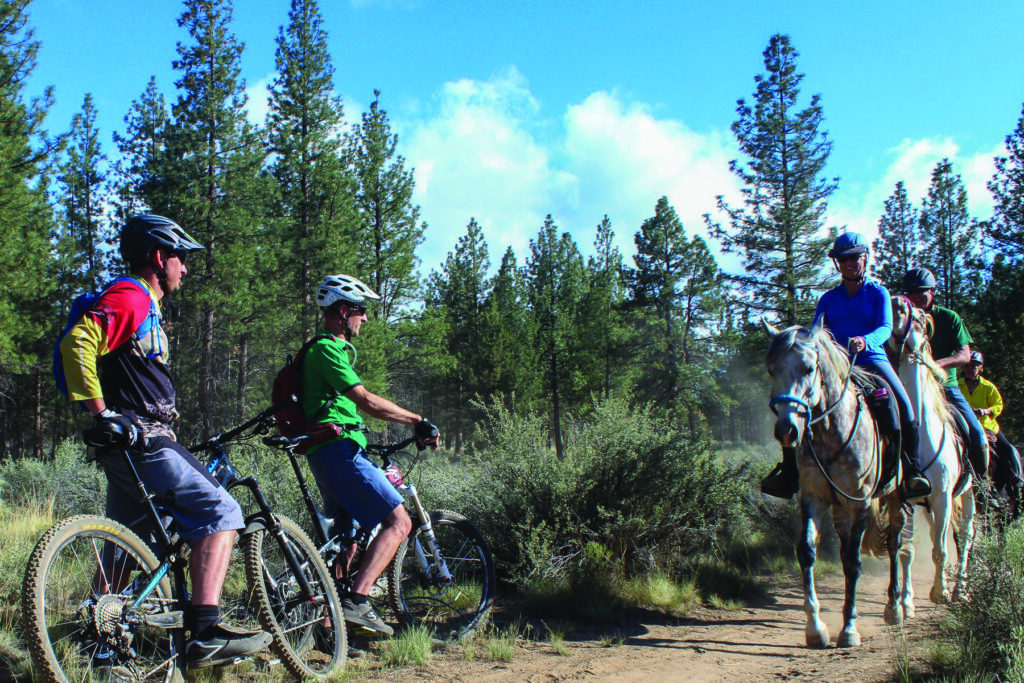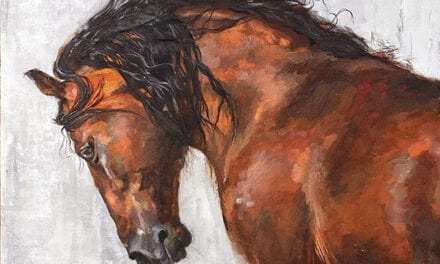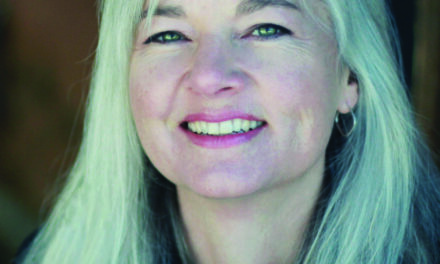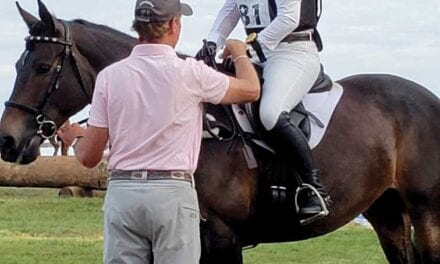
“Not all bikers and hikers encountered are aware of our vulnerability.”
**Next month will be our summer calendar! Email [email protected] with any horse events you would like added to the list!**
Yet, if one leaves the main towns and thoroughfares and ventures a few miles into the ‘backcountry,’ a fairyland of untold beauty unfolds in almost any direction.
—Donald L. Baars
As mountain residents, we enjoy some of the most beautiful trails in the nation. Not just a few, but several right in our backyards, not to mention the amazing places within a short drive throughout our state.
Some equestrians trail ride exclusively, while some equestrians come from all disciplines and use trail riding as a break from their usual pursuits and disciplines. Of course, it is always a great way to socialize, enjoy more casual riding and take in Colorful Colorado with friends and family.
Equestrians have a unique position as a trail user. Their key responsibility (other than keeping all involved alive) is as horse riding ambassadors to keep the trails and parking lots accessible to all equestrians. It goes without saying that the majority of the local trail users are bikers and hikers. Horse riders are truly the minority and, legally, hikers and bikers are required to yield to horses, because well, riders and horses (and anyone nearby) could be killed if
something goes terribly wrong. Equestrians need to hold that yielding priority with appreciation and respect.
As horse riders on the trail, be aware of your surroundings. Not all bikers and hikers encountered are aware of our vulnerability. For those of you reading this who are not horse people, it is important to mention that horses are prey animals, in other words, they instinctively know there are predators in the world that want to eat them. When they are scared or startled, horse self-preservation says RUN before they even think to assess if the threat is real or not. As prey animals, horses get nervous when encountering fast moving objects like runners, people on wheels and people hiding in bushes (maybe a predator ready to pounce on them?), not to mention the dog that has been waiting for the chance to grab a sniff of a horse from behind when they pass. Horses look to avoid the predator group of canines, lions and bears.
The majority of experienced trail users move just off the trail for horses and stand in a conspicuous place and talk to the horses. When encountering other trail users, no matter what their mode of travel, always start with grace, understanding and kindness. Being on the trails is more enjoyable and peaceful for all trail users when we get along. Start a pleasant conversation with each other. If someone is thinking they are being helpful by hiding behind a tree while you are on horseback, let them know that your horse needs to see and hear them.
As a motorist or bicyclist, when you encounter horses on the roadway (often one of the only places equestrians can ride outside in the winter months that is not slippery), slow down, make sure the riders see you, and get eye contact. For the reasons mentioned previously, horses startle easily and can even end up further into the road—increasing the chances of a bad outcome. No matter your opinion of whether kids, dogs, bikes, horses, people, or wildlife should be on the road or not, the vehicle has a considerable advantage and should yield to keep everyone safe. Please slow down, say hello and remember why you chose to live in the mountains.
Equestrians, be proactive. If possible, put the more trail-experienced horses at the front and back of your party. That way, if a bike comes up quickly, that horse is less likely to react and cause a chain reaction with the other horses. Of course, stay on the trail and walk while passing other trail users. If the trail allows, turn your horse toward the person/bike as soon as you notice them so your horse can get a good look at them. If possible, pony young horses off of more experienced horses to get them used to the trails and other users.
Venturing first on more open trails is wise. Open trails give your horse a chance to see someone coming from a distance. You can step off the trail and let your horse see the bike coming, for example. Some open trails under an hour from our area are Bear Creek Lake Park, Chatfield Park, parts of Elk Meadow and Mount Falcon.
Take care of each other and ride to the level of the least experienced horse or rider in your party. If you want to go on a fitness ride, go out with others with the same goal. If you are meeting various friends and friends of friends, consider it more social and be flexible. Get a feel for the other riders and their horses. If you think you might want a faster gait, first ask everyone in the party if they want to. Then, let them know when you are transitioning back to a walk.
Some of our best local horse trails include Alderfer/Three Sisters, Kenosha Pass, Pine Valley Ranch, Elk Meadow Park, Flying J, Beaver Brook Watershed, Mount Evans Wilderness, Gashouse Gulch, Staunton State Park, Little Scraggy Peak and Miller Gulch. Going early or later in the day, even after dinner is a great time during our long daylight hours in the summer. In addition, weekdays are typically quieter at local parks. It is important for equestrians to make the effort to use the designated parking areas and enjoy the parks alongside other users to show the need for oversized vehicle and trailer parking areas. The Lot Spot app can be a great tool to check parking availability before you go.
Riding horses is one of the most natural ways to experience the beauty and peacefulness of the mountains. Wildlife is more comfortable with our horses than people on their own and horses can take us places we would struggle to go without them. Stay safe and enjoy your summer riding around our beautiful state with your horses, friends, as well as the bikers and hikers on the trail!
Resources:
–Margi Evans’ “Riding Colorado I – II and III” books are a must-have for Colorado trail riders.
–bit.ly/3zKSZKG
Want to target your audience and advertise your horse-related business on this page? Ad space starts for under $200! Contact [email protected] for more information!
Heather McWilliams © 2023



